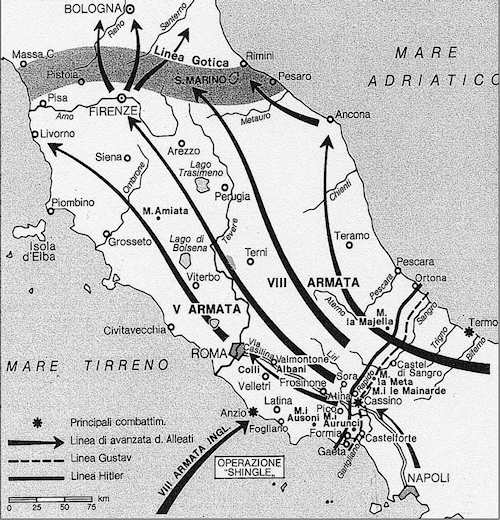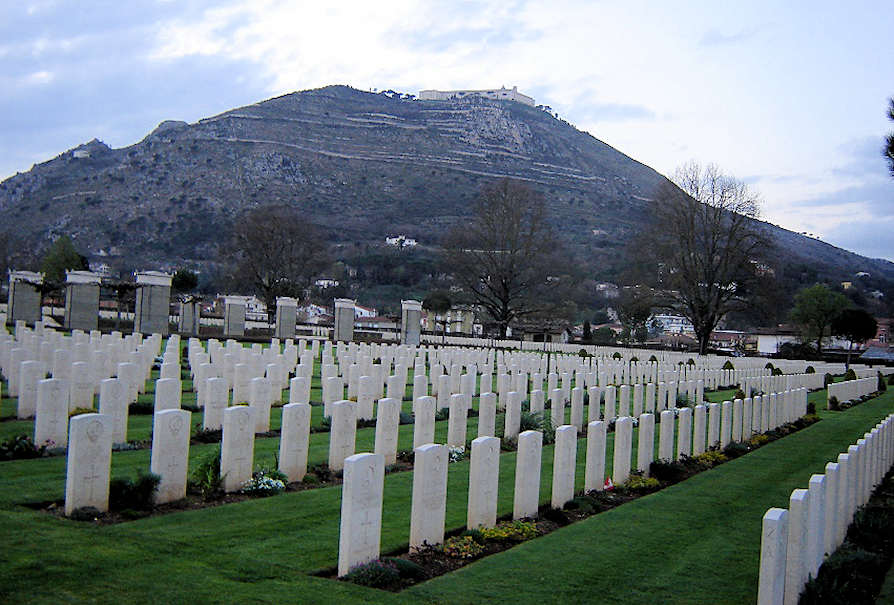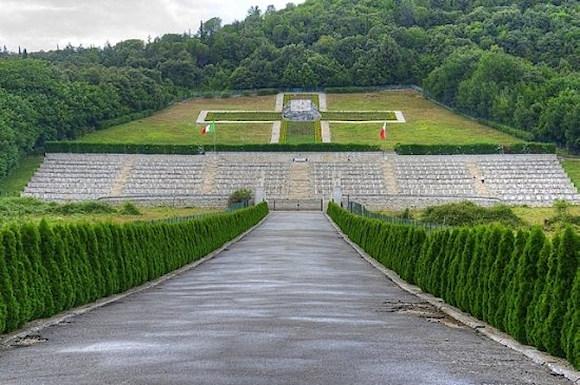During World War II, Polish soldiers played a significant role in the Battle of Monte Cassino, which was a series of four Allied offensives conducted between January and May 1944 to break through the heavily fortified German defensive line known as the Gustav Line that ran through central Italy and Cassino.
The Polish 2nd Army Corps, commanded by General Władysław Anders and composed mainly of Polish soldiers who had been Soviet prisoners of war and later released to fight with the Allies, played a key role in the battle, particularly during the assault final which took place in May 1944.
The conquest of Monte Cassino was a crucial step in the liberation of Italy during World War II. The victory helped pave the way for the Allied advance towards Rome and northern Italy.
The Polish military cemetery in Montecassino is dedicated to the Polish soldiers who lost their lives during the Battle of Monte Cassino in 1944. The 1051 soldiers who fell in the 4th battle of Montecassino are buried in the burial ground, having valiantly sacrificed themselves as part of the decisive operation conducted by the 2nd Polish army corps for the conquest of the rugged heights over which the majestic Benedictine abbey.
 The cemetery, inaugurated on August 1, 1945, is a poignant reminder of the sacrifices made by Polish forces during this critical phase of the Second World War. It is a symbol of remembrance and honors the courage and commitment of the Polish soldiers who fought in the hell of Monte Cassino and its surroundings.
The cemetery, inaugurated on August 1, 1945, is a poignant reminder of the sacrifices made by Polish forces during this critical phase of the Second World War. It is a symbol of remembrance and honors the courage and commitment of the Polish soldiers who fought in the hell of Monte Cassino and its surroundings.
The project of the monumental cemetery was entrusted to the Polish architect Jerzy Sołtan, one of the most important architects of the time in Poland, involved in the design of numerous commemorative monuments dedicated to the Polish soldiers who fell during the Second World War. The monument features a cross that dominates the area and a series of chapels, sculptures and tombstones that honor Polish soldiers.
Inside the cemetery, the Memorial Museum of the Second Polish Army Corps was inaugurated on 17 May 2014, on the occasion of the 70th anniversary of the Battle of Montecassino. The building project was designed by the architect Pietro Rogacien, son of a former combatant from Montecassino, as well as one of the builders of the cemetery.
General Władysław Anders is also buried in the cemetery, one of the most important military leaders of the Second World War, playing a significant role during the Italian campaign, including the Battle of Montecassino. During the German invasion of Poland in September 1939, Anders was taken prisoner by the Soviets and then amnestied after the signing of the Molotov-Ribbentrop Pact between Germany and the Soviet Union. After the war he emigrated to Great Britain where he lived until his death in 1970 and where his daughter Anna Maria, now Polish ambassador to Rome, was born.
In the Cassinate area there are several military cemeteries dedicated to the soldiers who fell during the Second World War. In addition to the Polish one we find the Commonwealth cemeteries, German (in the hamlet of Caira), Italian in Mignano Monte Lungo and French in Venafro. All places to visit to meditate.

Photo: web












